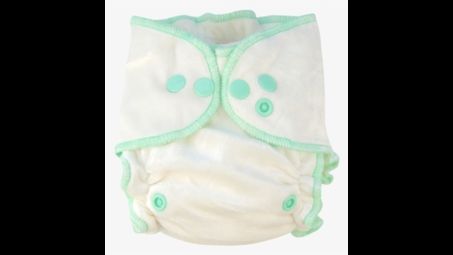They will save you thousands of dollars in the long run when compared to purchasing disposable diapers.
For each baby that is cloth diapered, we will keep hundreds of disposable diapers out of our landfills. (The current estimate of the length of time it takes for one disposable diaper to decompose is 500 years. Just saying.)

What else can I help you with?
What kind of diapers does a baby wear in 1825?
cloth diapers cloth diapers
How often should cloth diapers be changed to maintain cleanliness and prevent irritation?
Cloth diapers should be changed every 2-3 hours to maintain cleanliness and prevent irritation.
How often should you change cloth diapers to maintain cleanliness and prevent irritation?
Cloth diapers should be changed every 2-3 hours to maintain cleanliness and prevent irritation.
What do people prefer more cloth diapers or disposable?
People prefer disposable diapers over cloth diapers. Although cloth diapers are preferred for the environment, disposable diapers are more convenient.
How often should cloth diapers be changed to maintain proper hygiene and prevent leaks?
Cloth diapers should be changed every 2-3 hours to maintain proper hygiene and prevent leaks.
Are cloth diapers sanitary for babies compared to disposable diapers?
Cloth diapers can be just as sanitary as disposable diapers for babies if they are washed properly and changed frequently. It is important to follow proper cleaning and storage guidelines to ensure that cloth diapers remain hygienic for your baby.
What is the use of velcro cloth diapers?
Velcro cloth diapers are a lot cheaper than other diapers. You can custom fit velcro diapers more easily than snappy diapers, you can't do that with snappy ones.
Are disposable diapers better than cloth diapers?
Yes it does make it worth the cost. Cloth diapers are a disgusting hassle that you don't have to deal with when you have the disposable kind.
Is it cheaper to use organic cloth diapers or disposable diapers?
If you're just starting out using organic cloth diapers, the start up cost can be expensive in comparison to using disposable diapers. However, since organic cloth diapers are reusable and can be washed, they are the cheaper option in the long run.
What material is the best for making cloth diapers?
The best for making cloth diapers is cotton. Cotton is softer for babies skin and they are easier to soak and clean. The best way to dry cloth diapers is line dry.
How can cloth diapers be effectively used in the potty training process?
Cloth diapers can be effectively used in the potty training process by gradually transitioning from diapers to underwear. Start by using cloth diapers during the day and encourage your child to use the potty regularly. As your child becomes more comfortable with using the potty, gradually decrease the use of cloth diapers and increase the use of underwear. Consistency, positive reinforcement, and patience are key in successfully potty training with cloth diapers.
Should you wear cloth diapers?
Wearing cloth diapers can be a sustainable and cost-effective choice for parents, as they reduce waste and are often made from natural materials. They can be gentler on a baby's skin compared to some disposable options. However, cloth diapers require more laundry and maintenance, which may not suit everyone's lifestyle. Ultimately, the decision should consider convenience, environmental impact, and personal preferences.
